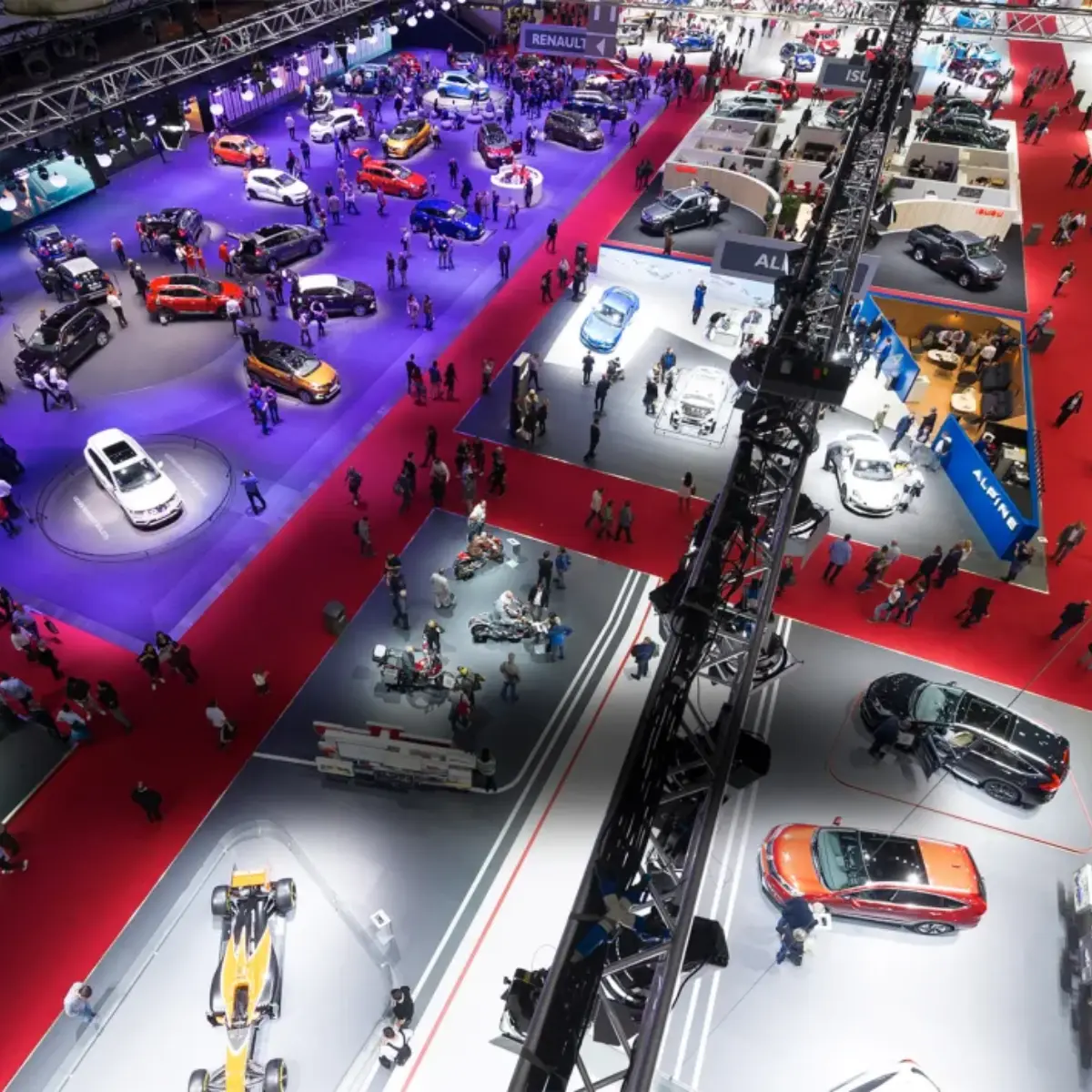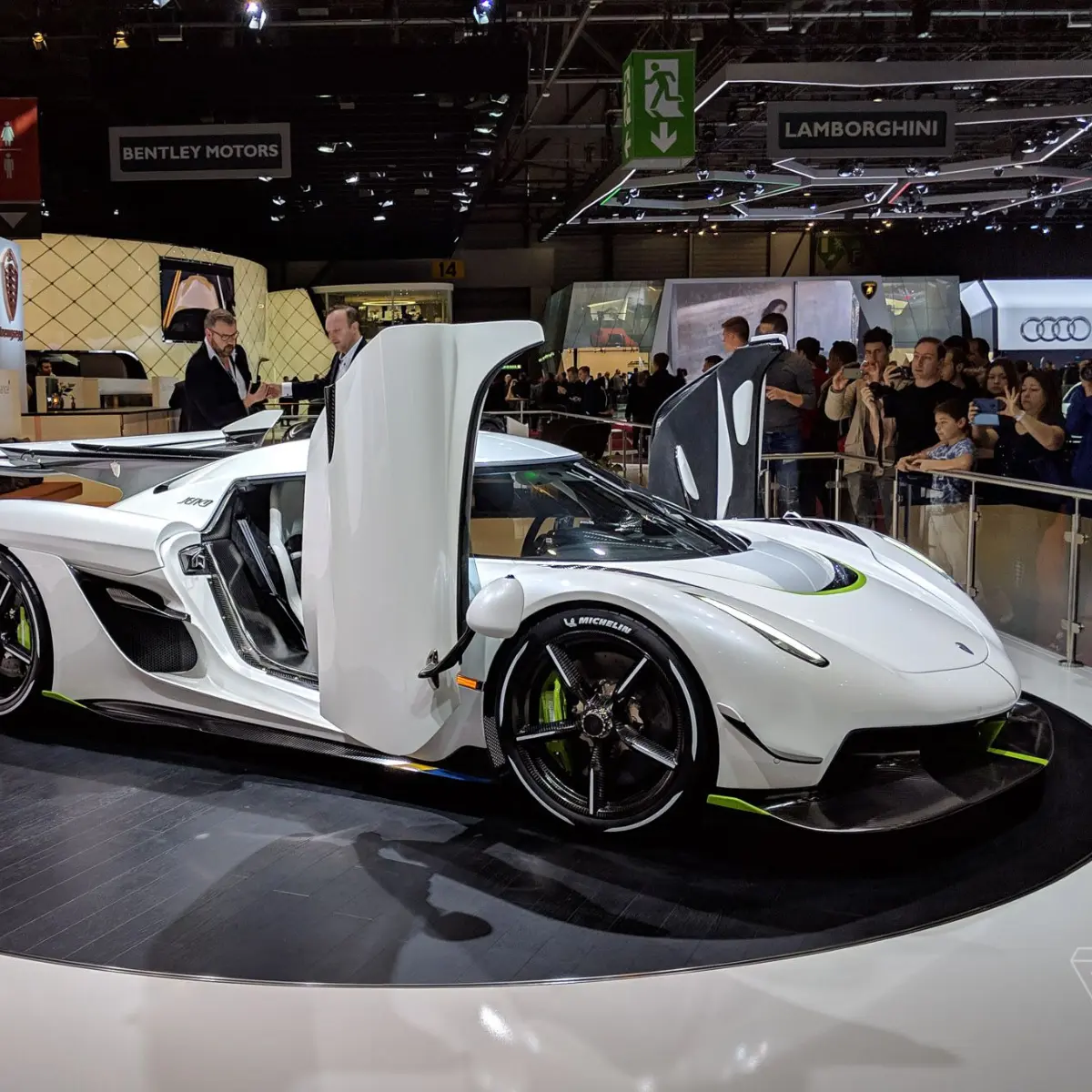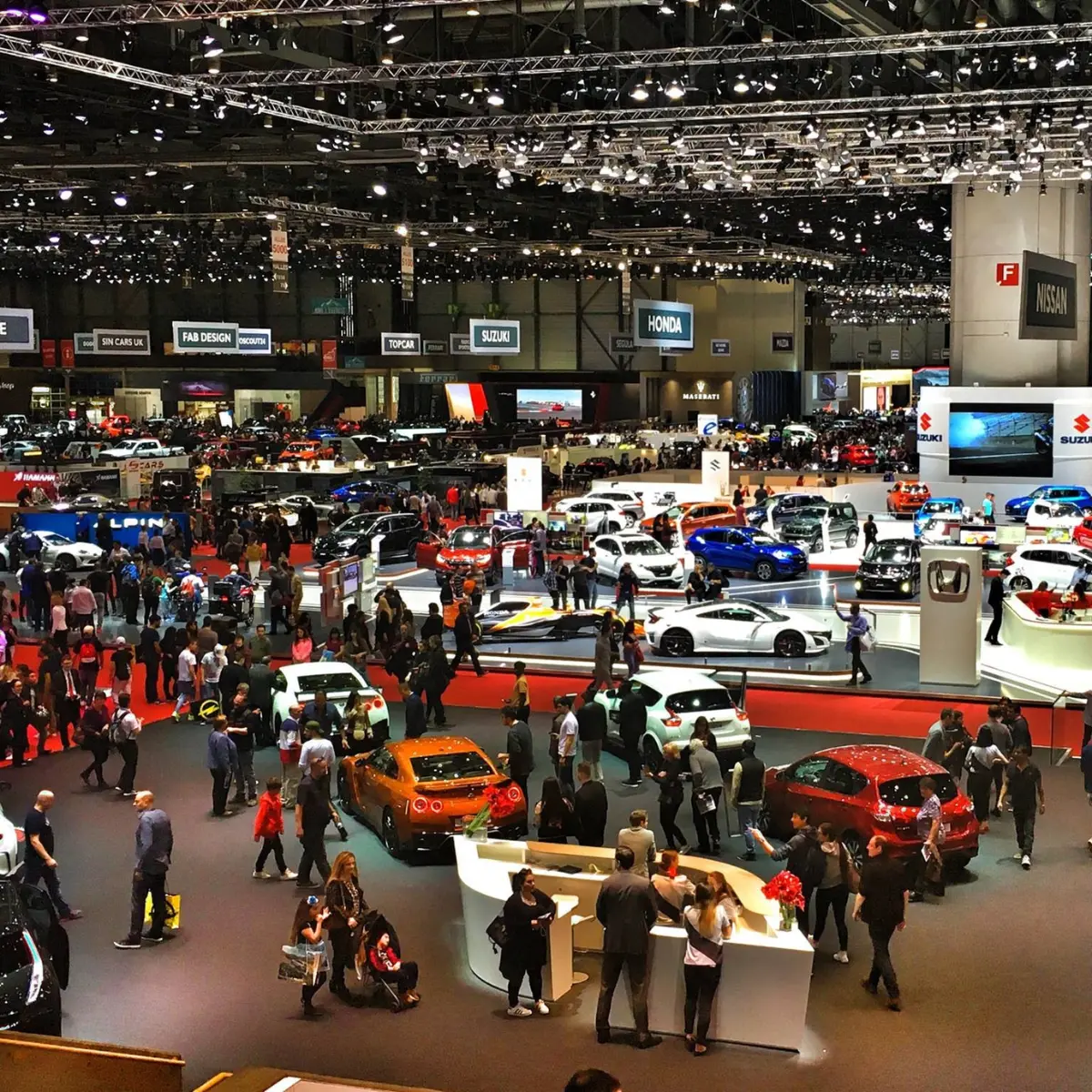Auto shows have long been the epicenter of innovation and style in the automotive industry. From the early days of showcasing the latest models to the public, these events have evolved into grand exhibitions where the future of transportation is unveiled. Auto shows serve as a dynamic platform for manufacturers to present their latest advancements in technology, automotive design trends, and visions for the future of mobility. They offer a unique glimpse into the industry’s direction, highlighting the shift towards more sustainable, efficient, and technologically advanced vehicles. The impact of auto shows extends beyond the automotive sector, influencing consumer preferences, encouraging competition among manufacturers, and fostering a culture of innovation.

Showcasing Automotive Design Trends
The Aesthetics of Tomorrow
When you step into an auto show, it’s like walking into a gallery where each piece forecasts the automotive design trends of the future. Designers use these platforms to experiment with lines, shapes, and materials that could define the next generation of vehicles. From sleek, aerodynamic bodies that promise efficiency and speed to innovative uses of glass and metal that blur the lines between the interior and exterior, auto shows are where the visual future of transportation takes shape. These events serve not only as a showcase but also as a testing ground for designs that could become the new standard.
Practical Innovations on Display
It’s a platform where beauty and utility are not seen as mutually exclusive but rather as complementing facets of automotive innovation. In this arena, the aesthetic appeal of a vehicle is matched by its technological and functional advancements, illustrating a holistic approach to car design that prioritizes the user experience. Retractable door handles are a prime example of this philosophy in action. By seamlessly integrating into the car’s body, they not only offer a sleek, futuristic look but also reduce air resistance. This subtle yet impactful modification can lead to enhanced fuel efficiency and performance, demonstrating how even the smallest design changes are driven by a deep consideration for both form and utility.
Similarly, the integration of roof-mounted solar panels on electric vehicles (EVs) represents a stride toward sustainability. These panels harness solar energy to extend the vehicle’s range, reducing the reliance on electric charging stations and diminishing the environmental footprint of EVs. This innovation is a testament to how car design is evolving to address the challenges of renewable energy and climate change.
From Concept to Reality
Concept cars are often bold, pushing the boundaries of current technology and design aesthetics to their limits. However, they’re also a glimpse into what’s possible, acting as a beacon for where automotive design could head. As these concepts garner feedback and interest, elements are refined, technologies are developed, and eventually, some of these futuristic visions become drivable realities. This process highlights the importance of auto shows as incubators for tomorrow’s car designs.
Influencing Consumer Preferences
By presenting the latest in design and technology, these events help to guide public preferences, signaling to manufacturers what consumers desire in their next vehicle. As a result, auto shows are not just exhibitions but pivotal moments where consumer trends, car shows, and industry trends converge. Manufacturers pay close attention to these shifts, often using the feedback to steer their product development and marketing strategies, ensuring that the next generation of vehicles aligns with evolving consumer demands.
Unveiling Car Innovation and Technology
The Rise of Electric Vehicles
As emphasized before, this evolution towards electric mobility is driven by the urgent need to reduce carbon emissions and mitigate climate change impacts. As we delve into the details, it becomes clear that several factors are propelling the rise of electric vehicles, offering a glimpse into a more sustainable future:
- Battery Technology: The core of the electric vehicle revolution lies in the advances in battery technology. Recent breakthroughs have significantly increased the energy density of batteries, allowing EVs to travel longer distances on a single charge. This improvement in range addresses a key concern for consumers, making electric cars a practical alternative to traditional internal combustion engines. Moreover, advancements in charging times and battery lifespan are making EVs more appealing to a broader audience, marking a pivotal step toward widespread adoption.
- Charging Infrastructure: The expansion of the EV charging infrastructure is another critical element that supports the growth of electric mobility. In recent years, both the public and private sectors have invested heavily in developing a more accessible and reliable charging network. This expansion is crucial for alleviating range anxiety among potential EV buyers, making it easier for them to find convenient charging options whether they are at home, at work, or on the road. As the infrastructure continues to grow, the convenience of owning an EV increases, further encouraging consumers to make the switch.
- Government Incentives: Government policies and incentives play a significant role in accelerating the adoption of electric vehicles. Across the globe, governments are implementing a variety of measures, including tax rebates, grants, and subsidies, to make EVs more financially attractive to consumers. These incentives not only lower the initial purchase price but often also reduce the ownership costs compared to conventional vehicles. By supporting the EV market, governments are not only promoting sustainable transportation options but are also fostering the development of the necessary infrastructure and technology.
The momentum behind electric vehicles is undeniable, driven by technological innovations, infrastructure development, and supportive government policies. These factors collectively enhance the attractiveness of EVs, offering a promising path towards a sustainable automotive future.
Autonomous Driving
The concept of autonomous cars or driverless cars has transitioned from science fiction to tangible prototypes showcased at car shows. These vehicles, equipped with cutting-edge sensors and AI algorithms, promise a future where cars navigate the roads with minimal human input. This technology aims to enhance safety by reducing human error, which is the cause of most road accidents. Additionally, autonomous driving technology holds the potential to revolutionize the way we think about commuting, offering more efficient use of time and resources.
Hybrid Systems
Hybrid vehicle technology represents a critical step in the transition towards fully electric and autonomous vehicles. By combining traditional combustion engines with electric power, hybrids offer an effective compromise, reducing emissions and fuel consumption while overcoming the current limitations of EV infrastructure. This technology not only serves as a bridge to a more sustainable future but also as a practical solution for consumers looking to reduce their environmental impact today.

Interactive Technologies
The integration of interactive technologies in vehicles has been a highlight of recent electric vehicle shows, pointing towards a future where the human-car interface is more intuitive, responsive, and connected. From advanced infotainment systems that offer seamless connectivity to voice-activated controls and augmented reality dashboards, these innovations enhance the driving experience. They not only make it safer and more enjoyable but also pave the way for fully autonomous driving. As cars become more connected, the potential for new services and features expands, making every journey a tailored experience.
Cross-Cultural Exchange of Automotive Innovation
By bringing together manufacturers, designers, and engineers from around the globe, these events facilitate the sharing of ideas and technologies that transcend geographical boundaries. This global dialogue is essential for driving innovation, as it combines diverse perspectives and expertise to tackle common challenges. The nature of car shows ensures that advancements made in one part of the world can benefit the entire global community, pushing the automotive industry toward a more interconnected and innovative future.
International Car Shows and Global Market Trends
Spotlight on Diversity
International car shows stand as vibrant showcases of the global automotive industry’s diversity, where the distinct design philosophies of European, Asian, and American manufacturers come to the forefront. These events are more than just exhibitions; they are melting pots of cultural and technological innovation, reflecting the unique perspectives and priorities that shape automotive design around the world.
European manufacturers have a long-standing reputation for engineering vehicles that offer a balance of power, comfort, and environmental efficiency, which is a direct response to the continent’s stringent emissions regulations and compact urban landscapes. In contrast, Asian manufacturers are known for their bold, innovative concepts. This region’s approach to car design frequently emphasizes cutting-edge technology and forward-thinking features, reflecting a culture that highly values innovation. From incorporating advanced AI systems for safety and navigation to pioneering electric and hybrid powertrains, Asian cars often lead in introducing new technologies to the market. American cars, with their power-driven aesthetics, symbolize a different set of values. The emphasis on size, strength, and performance caters to a market that loves the open road and values the freedom and adventure that come with driving. This design philosophy reflects the American spirit of independence and the vast landscapes that define the country, from bustling city streets to sprawling highways.
International car shows are pivotal in celebrating these diverse perspectives, offering a platform for manufacturers to present their latest creations to a global audience. These events encourage the exchange of ideas and inspire innovation by showcasing the varied approaches to automotive design and technology. Attendees can explore the unique challenges and opportunities each region faces, providing a comprehensive understanding of the automotive industry’s dynamic and ever-evolving nature.
The Global Race for Innovation
These events highlight the dynamic nature of the global automotive industry, where new players can rapidly ascend to prominence through innovation and quality. The spotlight on emerging markets at these shows underlines the shifting balance of power within the industry, as these new entrants introduce competitive technologies and designs. This aspect of car shows is crucial for keeping the industry vibrant and competitive, ensuring that innovation remains the driving force behind automotive development.
Recognizing Excellence
When a car brand receives an award, it’s not just a recognition of excellence; it’s a significant endorsement that can alter the brand’s perception among the public, investors, and industry peers. Let’s explore the various ways these accolades influence brand perception:
- Enhanced Credibility: Winning an award at a car show is a testament to a brand’s quality and innovation, lending it immense credibility. This recognition demonstrates to consumers, investors, and competitors that the brand’s vehicles meet or even exceed the rigorous standards set by industry experts. It’s an external validation that reassures potential buyers of the vehicle’s performance, design, and sustainability, making it a more attractive choice. Awards act as a seal of approval, suggesting that the brand is trustworthy and its products are of superior quality.
- Increased Visibility: Award-winning brands often enjoy a surge in media coverage, significantly boosting their visibility across various platforms. This increased attention can attract a broader audience, including potential customers who may not have considered the brand before. The spotlight also opens doors to new partnerships and opportunities within the industry, as other companies and investors take notice of the award-winning brand’s achievements. This heightened visibility is crucial for maintaining relevance and attracting new interest in an ever-evolving market.
- Market Differentiation: In a crowded marketplace, awards serve as a powerful differentiator for brands. They highlight a brand’s unique achievements and innovations, setting it apart from competitors. Whether the award is for groundbreaking technology, exceptional design, or sustainability efforts, it tells a compelling story about the brand’s values and priorities. This differentiation is vital for connecting with consumers who look for products that align with their preferences and values. By winning car show awards, brands can effectively communicate their strengths and unique selling points, making a lasting impression on potential buyers.
These accolades are not just trophies to be displayed; they are powerful marketing tools that can shape consumer perception and drive success. As such, the pursuit of excellence and innovation in the automotive industry is a testament to a brand’s commitment to quality and its vision for the future.

In the ever-evolving world of automotive design and technology, auto shows stand as a testament to human ingenuity and the relentless pursuit of progress. They are pivotal in setting trends, shaping consumer preferences, and catalyzing advancements in automotive technology. As the industry faces challenges such as environmental sustainability, the transition to electric and autonomous vehicles, and the integration of advanced digital technologies, auto shows will remain essential platforms for showcasing solutions and inspiring progress. By bringing together the brightest minds and the latest innovations, auto shows not only reflect the current state of the automotive world but also, more importantly, illuminate the path forward.
